FRIDAY THE 13th PART III (1982)
Jason Voorhees stalks a group of friends who's just arrived to spend the weekend at a cabin near Crystal Lake.
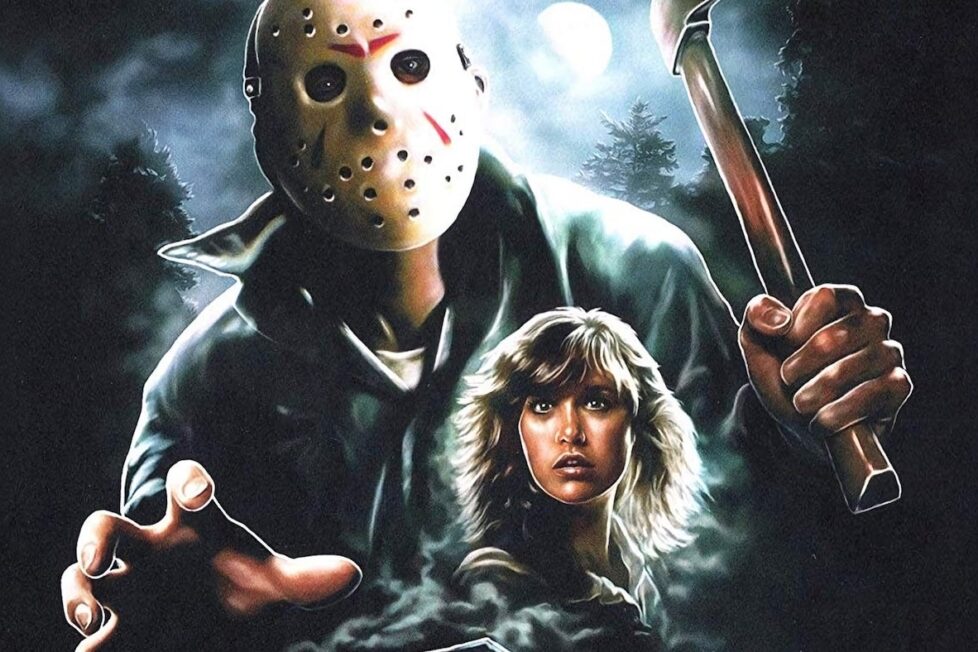
Jason Voorhees stalks a group of friends who's just arrived to spend the weekend at a cabin near Crystal Lake.


A title card humbly reads Friday the 13th Part III, but why shy from the marketing stunt of Part 3: 3D? Everyone knows this is the one where Jason Voorhees swings his machete right at us, the audience. The gimmick certainly didn’t add dimension to the characters or story. Paramount Pictures, Georgetown Productions, and director Steve Miner knew 3D would put butts in seats in 1982. From VHS and DVD to Blu-ray and streaming, many people over the past 40 years have only experienced standard 2D Jason, until a home 3D release in 2009… so why did Friday the 13th abandon this “new dimension of terror” so soon?
This campfire story starts with the Spanish western comedy Comin’ At Ya! (1981), which revived 3D from the 1950s for a new generation. Managing to open in only two US cities, 90,000 anaglyph glasses were manufactured… and the idea blew up. Expanding to around 200 theatres, they were selling out of glasses at 40,000 a screen. Grossing $12M on a $2.5M budget, Paramount producer Frank Mancuso Jr. knew these young audiences were the same kids who made the prior two Friday movies similar breakout hits. Already considered the modern grand guignol, now pitchforks could be lunged, eyeballs popped, and even joints passed right at boisterous spectators. Part III only shows restraint in not having girls-gone-wild bouncing out the big screen.
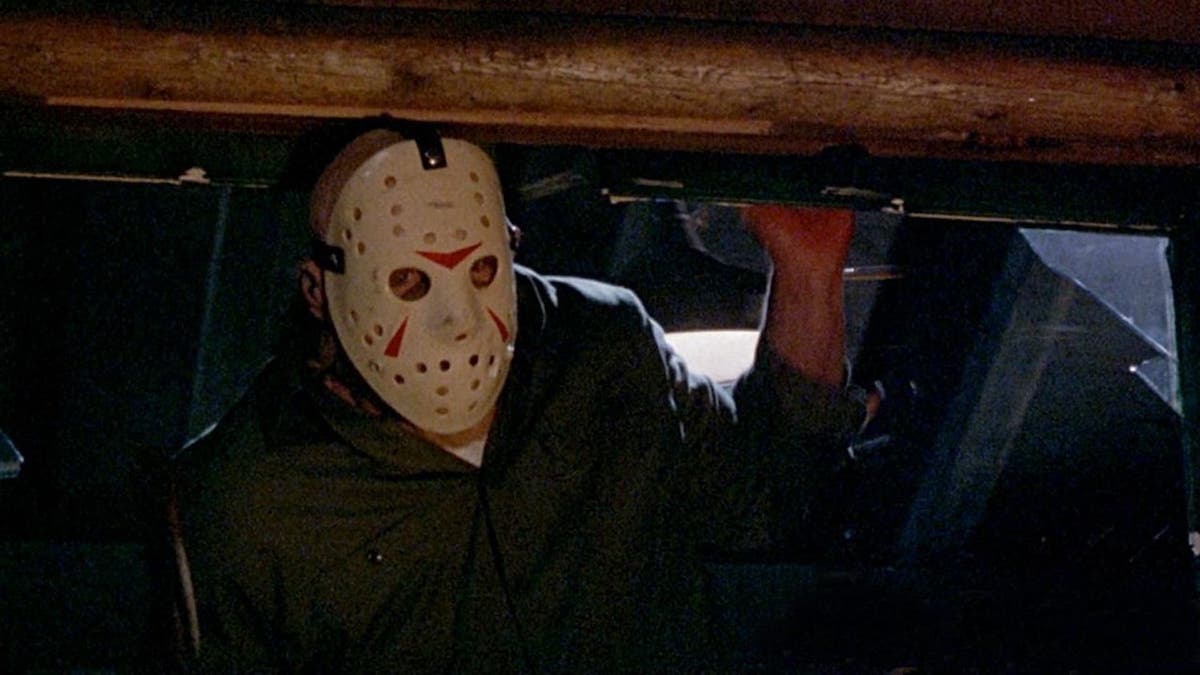
This was a serious undertaking and the first Paramount 3D picture since Jivaro (1954). They leased two 3-Depix cameras from photography company Marks Polarized Corporation, but Sirius II Corp owner Gale Weaver visited Mancuso Jr on set, who feared faulty projection lenses at theatres would ruin a wide theatrical release. Two weeks later, Weaver developed a prototype lens adaptable to “almost all theatre projectors”, which earned Sirius II Corp a cool $1M to manufacture for Paramount.
“The key priority in every scene was making sure that the 3-D effects worked. It didn’t matter how the lines were delivered. It didn’t matter if we stumbled or fumbled. It didn’t matter if our performance was not perfect. We never did a second take…”
Tracie Savage (actress, playing Debbie)
How much acting does a Friday the 13th need, anyway? Part III cemented the formula-driven remix of nubile teens macheted out in the woods. Before that, of course, we’re shown the finale of Part II (1981), as this film needed the extra five minutes to achieve its 95-minute runtime! A recap doubly ironic as the return of Ginny (Amy Steel) surviving round two with Jason in a psych ward (Halloween II, much?) was chopped, as was his hair (which is suddenly gone), while his shoulder chop inexplicably heals. Set the next day, Jason kills a new cast of campers on Saturday the 14th, and does so completely maskless. Everyone knows Part III is the origin of his famous hockey mask, but Jason’s ugly mug is off-screen entirely until the third act.
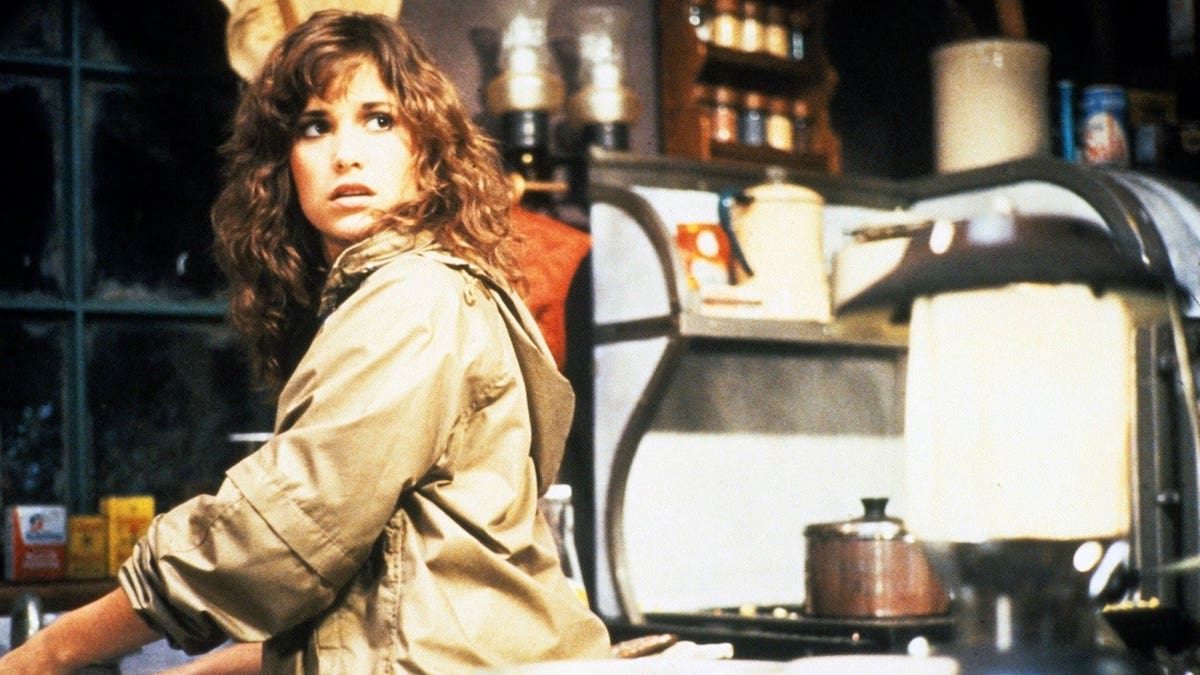
Screenwriting couple Martin Kitrosser and Carol Watson wink at the audience with opening lines from our youthful characters, like “what would a weekend in the country be without sex?” Heroine Chris (Dana Kimmell) stands out only because her name is literally painted on the van door, while perpetual sad-sack Shelly (Larry Zerner) livens up dialogue scenes with his kitschy killer pranks. If you want more developed personalities, look no further than the stoner couple who the producers told them to just act like Cheech & Chong. It would take the franchise six films before poking real fun at itself, but I’ve always adored the revolving door scene of the new victims driving by the last victims exiting via body bags. Ghostwriter Petru Popescu admitted casting was all about looks over talent; Kimmell recalls mainly screaming for her audition, while Zerner was literally picked up off the street.
These teens aren’t a total bore to put up with until they perish. Shelly feels like a co-lead with the amount of screentime alongside Chris as the two parallel in the ‘sex = death’ narrative. Chris is routinely putting off sex, while poor Shelly is politely rejected after one too many japes. Kimmell was a Mormon doing a horror film, rejecting a line about doing the deed offscreen, but Chris’ sexual hang-ups are never accurately examined. Popescu deliberately left her backstory monologue of being assaulted by Jason in dreamlike ambiguity as explicit rape is not the same gratuitous entertainment as their extravagant violence. Still, even implicitly suggesting Jason is a one-time rapist is an odd choice.
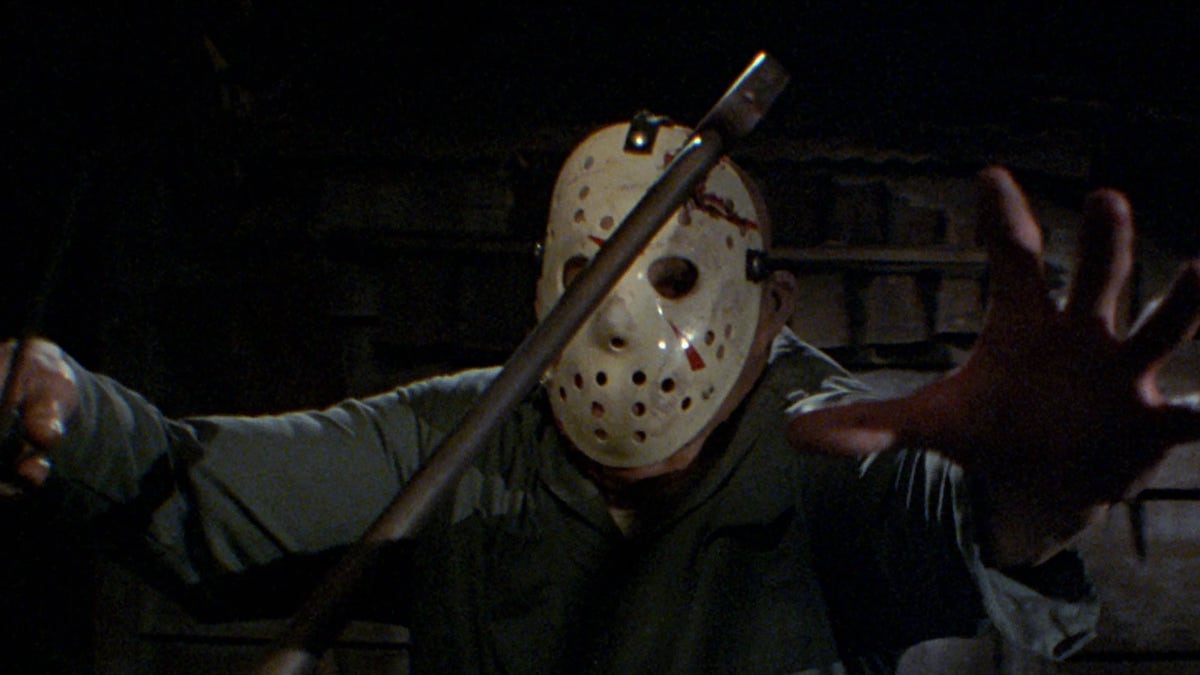
We shouldn’t question Jason’s motives given his agonisingly artificial refusal to slaughter the lot until the obligatory third act climax. The narrative formula is written on the wall as almost every character hears a noise and goes to investigate for no good reason. People were pissed at how long Jason spent on a boat to Manhattan, but this is Friday the 13th: Jason Takes A Barn. Saving graces are the biker trio that force Shelly to act bravely in front of his love interest, as well as keep Jason busy away from the main cast.
Stan Winston had worked uncredited on Part II and did the same here until he had to switch productions, so Doug White took over. Beneficial as he had just helmed the special effects for Charles Band’s Parasite (1982) also in 3D. Even presented in 2D, the most memorable deaths effectively leap out of the screen. Rick (Paul Kratka) getting his eyeball launched from his head is doubly hilarious as Miner fails to conceal the evident eye-on-a-stick trick. Yet the speargun into both the face of us and Vera (Catherine Parks) is striking with our first proper introduction to hockey-fan Jason. And the most visceral comes from a hand-standing Andy (Jeffrey Rogers) being cleaved in the crotch before getting folded like a pretzel. After such a beleaguered production, Paramount expected a butchering from the MPAA. Part III got off fine. A few trims and an R-rating would be perhaps the easiest battle they ever had from the censors.
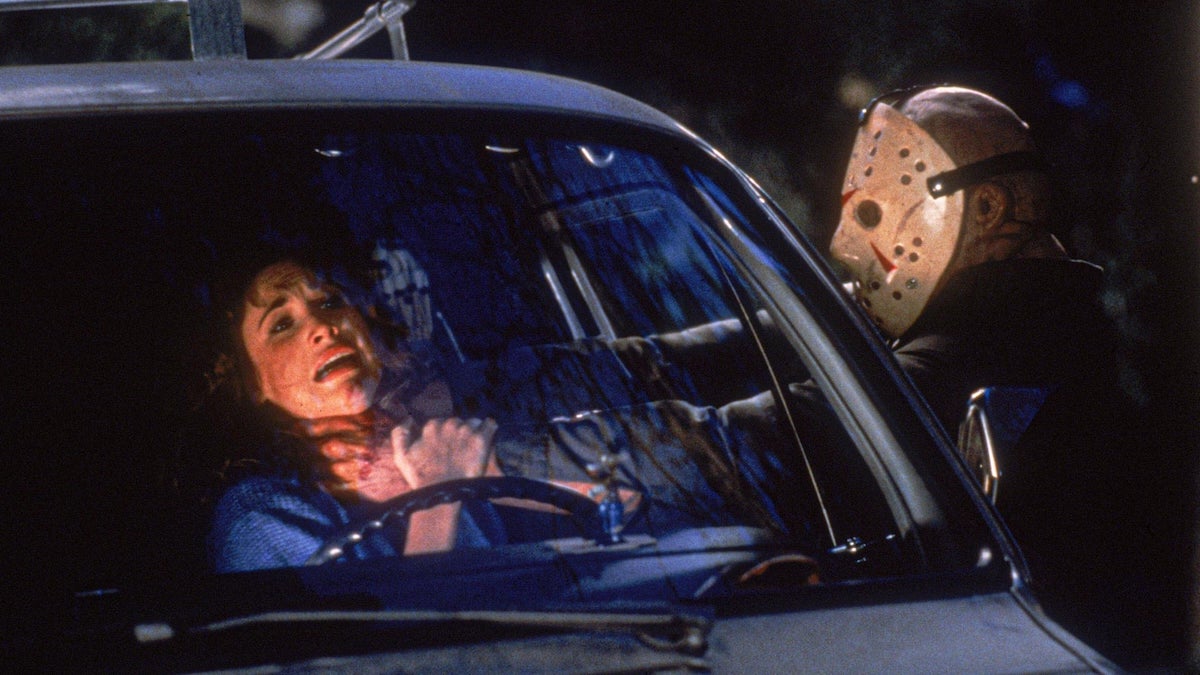
Production wrapped and this was the first-ever 3D film to receive a wide domestic release at 1,079 screens. Supplying the 813 screens capable of 3D with their new projection lens was costly enough, but over 200 smaller theatres and drive-ins couldn’t accommodate it. Knowing they’d have to do so for the home release, Paramount undertook a seven-week conversion process from 3D to 2D. This cost $2M, equal to almost the entire budget of the film at $2.2M! But neither of those numbers compare to the $25M lawsuit from Marks Polarized Corporation—remember them? Alleging the studio was “monopolizing the marketing of 3D exhibition materials, as well as providing deductions to theatres choosing to lease projection lenses directly from Paramount”, they served an injunction that Paramount change their equipment.
Friday the 13th: Part III survived miraculously only having to credit the company and went on to gross $36.7M at the box office. It was the year’s second highest-grossing horror, after Poltergeist, and even knocked E.T. the Extra-Terrestrial off the No.1 spot after six weeks. Sure, the sequel was reviewed abysmally, but then so were the last two, and this entry still holds the third most attendance behind Friday the 13th (1980) and Freddy vs. Jason (2003). For fans and critics, respectively, this was a good and bad sequel as it proved third time’s a charm with Friday the 13th. The series would go on tinkering with the details but the ‘unstoppable killer in a hockey mask’ look was now here to stay. A shame the new dimension in terror was left in the past as the 3D gimmick was the only praised element in a lake of critical negativity.
USA | 1982 | 95 MINUTES | 2.35:1 | COLOUR | ENGLISH


director: Steve Miner.
writers: Martin Kitrosser, Carol Watson & Petr Popescu (uncredited) (based on characters created by Victor Miller & Ron Kurz).
starring: Dana Kimmell, Paul Kratka, Tracie Savage, Jeffrey Rogers, Catherine Parks, Larry Zerner, Richard Brooker & David Katims.
